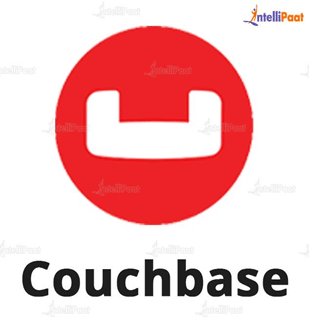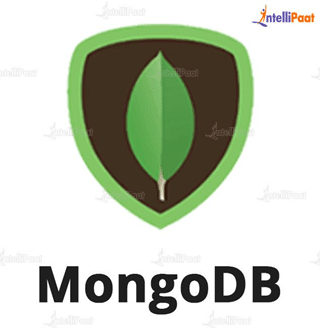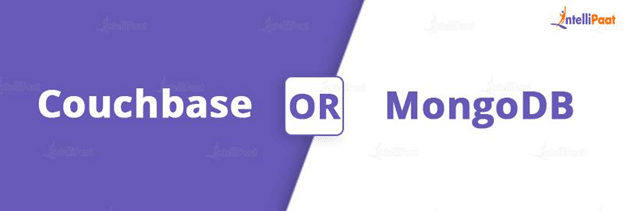Couchbase vs MongoDB – Using Comparison Table
Data can be termed as facts or information gained about any object. It is stored, maintained, and accessed by databases. A database is essentially the data stored in an organized manner. Over the years, databases have witnessed a tremendous evolution. Today, most organizations use SQL and NoSQL database management systems.
Follow along as we understand these databases in detail.
Topics to be Covered
- What are NoSQL databases?
- Why NoSQL?
- What is Couchbase?
- What is MongoDB?
- Couchbase VS MongoDB
- Which is better: Couchbase or MongoDB?
- Conclusion
Watch this interesting video on MongoDB architecture to gain in-depth knowledge about all the things related to MongoDB!
What are NoSQL databases?
NoSQL stands for Not Only SQL. NoSQL database can handle structured, semi-structured as well as unstructured data. It can manage huge amounts of data. NoSQL databases follow horizontal scaling and comprise flexible schemas.
NoSQL databases are majorly categorized into four different types:
- Document Database (Example: MongoDB)
- Key-Value Database (Example: DynamoDB)
- Wide Column Database (Example: Cassandra)
- Node/Graph Database (Example: Neo4j)
Before making your final decision, it is important to see why you should choose NoSQL over other relational databases.
Why NoSQL?
Relational databases have been used for decades as the chief data-storing mechanism. SQL or Structured Query Language is one of the most widely used databases. Although it is rigid, well structured, and has the ability to handle thousands of queries in not more than a few seconds, it has its limitations. These databases encounter scalability issues with the growth of applications. To cure this problem, NoSQL databases were introduced.
NoSQL databases primarily focus on two features:
- Flexibility
- High speed
Here are a few reasons why and when you should opt for NoSQL databases:-
- Structured, semi-structured, and unstructured data could all generally be stored and modelled in one database using NoSQL.
NoSQL databases frequently store data in a form that is identical to the objects used in applications, which eliminates the need to translate data from its stored form to the form it acquires in the code.
- The NoSQL database is made to distribute data widely. For write and read operations, it employs many locations that include numerous data centres and/or cloud regions.
The masterclass architecture is really advantageous for this distributed database. Due to the fact that data is sent in numerous copies to the appropriate locations, continuous availability can be maintained.
- A scale-out approach is used by many NoSQL databases and offers a simple technique to expand the amount of traffic a library can handle.
- NoSQL is best suited for big data applications since it can manage the enormous volume of data quickly. NoSQL databases make sure that when all of the other parts of your server-side programme are created to be seamless and quick, data doesn’t become the bottleneck.
Want to learn SQL in detail? Enroll in this amazing Certification Training Program and learn from experts Microsoft SQL Certification Training.
Alright, moving forward, now we’ll see what Couchbase is.
What is Couchbase?

Couchbase is a developer friendly, open-source NoSQL database server launched in 2011. As it is a NoSQL database, it makes use of a schema-free data model.
Here are some cool features that differentiate it from other existing databases.
- Couchbase is highly flexible, has a similar structure as the data that is in the code and supports different frameworks and languages.
- It is document oriented.
- It supports two types of ACID transactions-
- N1QL (SQL – 92 compatible)
- Key-Value
- It assists in avoiding pointless joints. In turn, this enhances the performance.
- Couchbase follows the Memory- First architecture.
- It is modular and the user can decide which of it services are required. It can be used as a-
- NoSQL Database
- Key-Value Store
- Cache
- Search Engine
Refer to these carefully filtered questions on Couchbase to ace your next interview!!
Top Couchbase Interview Questions – Most Asked
Now that we are aware of what Couchbase is, let’s move on to understand MongoDB as well.
What is MongoDB?

MongoDB is a widely used non-structured, open-source NoSQL database solution, launched in 2009.
Let’s look at some of its features to grasp a better understanding of the same.
- MongoDB is a document oriented database server. This entails that instead of storing data in form of columns and tables (like a relational database model would generally do), MongoDB stores data in the form of records called documents.
- MongoDB is becoming increasingly popular because of its qualities such as-
- High speed
- Scalability
- Ease of use
- Sharding technique can be used in MongoDB databases to easily scale data in the database horizontally.
- It follows a distributed system. The collections or records are self contained which makes them simple to work with. Due to this, MongoDB can efficiently handle enormous amount of work load.
- Every field in the documents is indexed by the MongoDB database with primary and secondary indices, which speeds up and simplifies retrieving or searching for data from the pool of data.
- It is a highly flexible schema-free model.
Both Couchbase and MongoDB are brilliant NoSQL databases, but they own have their own unique features and differences.
Career Transition
Let’s understand these differences by doing a detailed analysis of MongoDB VS Couchbase.
Couchbase VS MongoDB
Installation/Configurations
| COUCHBASE | MONGODB |
| Couchbase configures everything at one place and offers an integrated admin console. | The master-slave paradigm is used by MongoDB and a lot of moving pieces need to be manually configured. |
Scalability
| COUCHBASE | MONGODB |
| It is easy to replicate data in Couchbase as it is horizontally scaled. | MongoDB uses JSON documented type scaling. |
Languages Supported
| COUCHBASE | MONGODB |
| Couchbase supports less programming languages as compared to MongoDB. Some of these are: Javascript, C, Go, .NET, ColdFusion, Java, PHP, Clojure, Erlang, Pearl, Python, Scala and Ruby. | MongoDB supports a wide range of programming languages. Some of them include: C, C++, Clojure, ColdFusion, D, Actionscript, C#, Dart, Delphi, Java, Javascript, .NET, Erlang, Go, Groovy, Matlab, PHP, R and Python. |
Pricing
| COUCHBASE | MONGODB |
| Couchbase is completely open-source. | MongoDB is open-source as well, but some of its services need to be paid for. |
Database Joins
| COUCHBASE | MONGODB |
| In Couchbase, the developers can take advantage of all the features of SQL because of the presence of ANSI Joins. | MongoDB lacks efficient document joins in sharded collections. This may lead to: Duplication of dataDenormalizationComplicated application logics |
Reliability
| COUCHBASE | MONGODB |
| Due to horizontal scaling and its memory first architecture, Couchbase is comparatively safer and more reliable than MongoDB. | MongoDB is not as reliable as COuchbase database. |
Speed
| COUCHBASE | MONGODB |
| Couchbase is fast compared to relational databases, but relatively slower than MongoDB. | MongoDB is faster compared to its competitors. |
Data Model
| COUCHBASE | MONGODB |
| The data model of Couchbase: JSON | The data model for MongoDB: BSON |
Querying of data
| COUCHBASE | MONGODB |
| N1QL serves as an awesome querying language for Couchbase databases. Using N1QL, developers can easily develop applications by querying and transforming the data in JSON documents. | Due to lack of a query language, the querying of data in MongoDB is quite complex, which ultimately leads to relatively poor scalability and query performance. |
Which to choose: Couchbase or MongoDB?

MongoDB is definitely more popular today as compared to Couchbase. Due to its unique technical features, flexibility, and easy to use solutions, MongoDB is a trusted database model by a number of organizations.
Nevertheless, Couchbase is gaining momentum and has many advantages over MongoDB.
Looking at their differences and distinguishing features, the answer to which one is better eventually comes to this- The one that better suits your needs and use cases!
Courses you may like
Conclusion
Couchbase and MongoDB both are great NoSQL databases. Each of them have their own advantages and disadvantages. In this article we covered how different they are based on various factors.
So next time you are stuck and can’t make a decision as to which to choose, MongoDB or Couchbase, make sure to ponder over their unique features and then determine the best fit for your project.
Still having doubts? Don’t worry! Drop your queries on our Community Page.
The post Couchbase vs MongoDB – Using Comparison Table appeared first on Intellipaat Blog.
Blog: Intellipaat - Blog
Leave a Comment
You must be logged in to post a comment.













